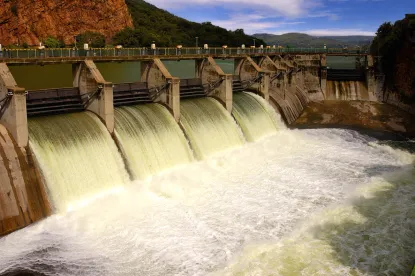On December 11, 2018, the United States Environmental Protection Agency (EPA) and the Army Corps of Engineers (ACOE) announced proposed changes to the agencies’ definition of “waters of the United States” (WOTUS). This definition, conspicuously absent in the Clean Water Act (CWA), determines when point source discharges require CWA National Pollutant Discharge Elimination System (NPDES) permits from the EPA and delegated states, when dredging and other filling of wetlands require CWA §404 permits from ACOE, and when agencies and environmental groups can assert claims alleging violations of these permit programs or other CWA liability, such as payment of spill response costs and penalties. The proposed revised WOTUS definition would replace the 2015 Clean Water Rule (2015 Rule), which has been the subject of numerous legal challenges since its publication.
In July 2017 and July 2018, the EPA and ACOE proposed repealing the 2015 Rule, as part of a two- step process to rescind and replace one of the Obama Administration’s prominent accomplishments. After certain courts rejected a Trump Administration rule attempting to delay the effective date of the 2015 Rule, the 2015 Rule is currently in effect in 22 states, the District of Columbia, and the U.S. Territories. Stays issued by other courts hearing challenges to the 2015 Rule left the remaining 28 states subject to the WOTUS definition in effect prior to the 2015 Rule.
The EPA and ACOE assert that the proposed rule will provide clarity, predictability, and consistency so that regulators and the public can understand when the Clean Water Act applies. According to the Government, the proposed rule is also consistent with the statutory authority granted by Congress, legal precedent, and executive orders. Notably, the proposed definition would eliminate the process of determining whether a “significant nexus” exists between a water and a downstream traditional navigable water. A similarly broad, “significant nexus” approach to defining WOTUS was employed in the 2015 Rule, tracking Justice Kennedy’s concurring opinion in Rapanos v. United States (2006) and related agency guidance issued in 2007 and 2008.
As shown in the EPA's linked figure, the proposed definition lays out six categories of WOTUS: (1) traditional navigable waters, (2) tributaries, (3) certain ditches, (4) certain lakes and ponds, (5) impoundments, and (6) adjacent wetlands.
-
Traditional navigable waters (TNW) are large rivers, lakes, tidal waters, and the territorial seas used in interstate or foreign commerce. There is no change to this category, except that the territorial seas are identified as a type of TNW.
-
Tributaries would be rivers and streams that flow to TNW. As proposed, these naturally occurring surface water channels must flow more often than just when it rains. In other words, the tributaries must contribute perennial or intermittent flow to downstream TNW in a typical year. Ephemeral features would not be tributaries under the proposal. Tributaries can connect to TNW directly, through other WOTUS, or through other non-jurisdictional surface waters, so long as those waters convey perennial or intermittent flow downstream.
-
Ditches would be artificial channels used to convey water. Ditches will be jurisdictional where they are traditional navigable waters (such as the Erie Canal), or are subject to the ebb and flow of the tide. Ditches may also be jurisdictional where they satisfy conditions of the tributary definition and either (1) were constructed in or relocated a tributary or (2) were built in adjacent wetlands (described below).
-
Lakes and Ponds will be jurisdictional where they are TNW. Lakes and ponds will also be jurisdictional where they contribute perennial or intermittent flow to a TNW either directly, through other WOTUS, or through other non-jurisdictional surface waters, so long as those waters convey perennial or intermittent flow downstream. Lakes and ponds flooded by a WOTUS in a typical year, such as oxbow lakes, will be jurisdictional.
The proposed rule also outlines what would not be considered WOTUS, including:
- ephemeral features that only contain water during, or in response to, rainfall; groundwater;
- ditches that do not meet the proposed conditions necessary to be jurisdictional (including most farm and roadside ditches);
- prior converted cropland (this longstanding exclusion for certain agricultural areas would cease to apply when cropland is abandoned – not used for, or in support of, agricultural purposes in the preceding five years – and has reverted to wetlands);
- stormwater control features excavated or constructed in uplands to convey, treat, infiltrate, or store stormwater runoff;
- wastewater recycling structures, such as detention, retention and infiltration basins and ponds, and groundwater recharge basins would be excluded if constructed in uplands; and waste treatment systems (defined for the first time in the proposed rule).
The agencies highlight the following changes in the proposed rule, as compared to the 2015 Rule and pre-2015 practice:
- Interstate waters are no longer an independent category of jurisdictional waters under the proposed rule and, to be considered WOTUS, must satisfy the conditions of another jurisdictional waters category.
- No ephemeral features are considered jurisdictional under the proposal. Some ephemeral streams were jurisdictional under both the 2015 Rule and pre-2015 practice.
- Fewer ditches will be considered jurisdictional under the proposed rule because no ditches constructed in uplands and no ditches with ephemeral flow would be considered jurisdictional. Under the 2015 Rule and pre-2015 practice, ditches were jurisdictional where they were a tributary, including ditches constructed in uplands with perennial or intermittent flow.
- Lakes and ponds were not a separate category in either the 2015 Rule or pre-2015 practice. The proposed rule regulates lakes and ponds as TNW or as part of the tributary network of TNW, which is closer to pre-2015 practice. Fewer lakes and ponds may be jurisdictional than Impoundments of WOTUS will be jurisdictional. Adjacent wetlands that physically touch other jurisdictional waters would be jurisdictional WOTUS under the proposal. Such wetlands include those with surface water connections in a typical year that result from (1) inundation from a WOTUS to the wetland or (2) perennial or intermittent flow between the wetland and a WOTUS. Wetlands that are near a jurisdictional water but do not physically touch that water because they are separated – for example, by berms or uplands – would be WOTUS as adjacent wetlands only where they have such a surface water connection extending through or over the barrier, including wetlands flooded by jurisdictional waters in a typical year. under the 2015 Rule because many non-navigable, isolated lakes and ponds were considered adjacent waters together with many isolated wetlands under a broad definition of “neighboring” in the 2015 Rule.
- Circumstances in which wetlands would be considered adjacent and WOTUS are more limited under the proposed rule when compared to the 2015 Rule and pre-2015 practice. For example, under the 2015 Rule and pre-2015 practice, wetlands behind a berm or dike were considered adjacent WOTUS. Under the proposed rule, wetlands must either abut (touch) jurisdictional waters or have a direct hydrological surface connection to jurisdictional waters in a typical year to be jurisdictional themselves. Wetlands physically separated from jurisdictional waters by a berm, dike, or other barrier are not considered adjacent if they lack a direct hydrologic surface connection to a jurisdictional water in a typical year.
The agencies are seeking public comment on the proposed WOTUS definition and the terms within it, as well as input on implementing the proposed rule to maintain clarity when used in the field. Public comments on the proposed rule will be accepted for 60 days after the proposed rule is published in the Federal Register.
The proposed rule promises to clarify and improve the process and terms defining WOTUS and triggering permit requirements and other CWA obligations and liabilities. The greater reliance on sustained surface water connections, rather than “significant nexus” effects on navigable-in-fact waters, more closely tracks Justice Scalia’s plurality opinion than Justice Kennedy’s concurring opinion in Rapanos v. United States, as directed under Executive Order 13778. But, EPA and ACOE hope the courts will view their proposed revisions as properly defining WOTUS and bridging the gap between prior U.S. Supreme Court interpretations.
The proposal’s ability to deliver on these promises is certain to be questioned and delayed by challenges from environmental groups favoring the 2015 Rule. The cloud of litigation continues to hover over this essential term, where determining CWA requirements inevitably begins for countless manufacturers, developers, farmers, and others extracting natural resources, performing construction activities, or disposing of wastewaters. In the interim, these parties, agency staff, and others attempting to interpret the CWA lack a statutory definition and must search through competing rules and court decisions to reliably plug the hole.




 />i
/>i

